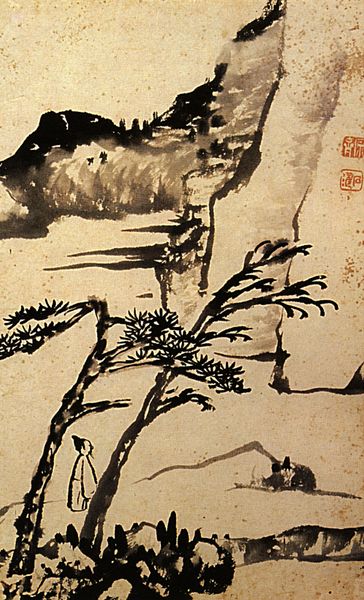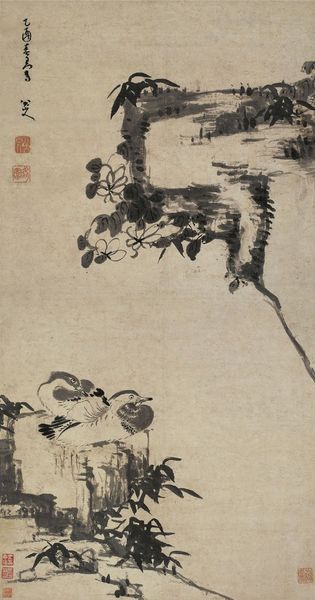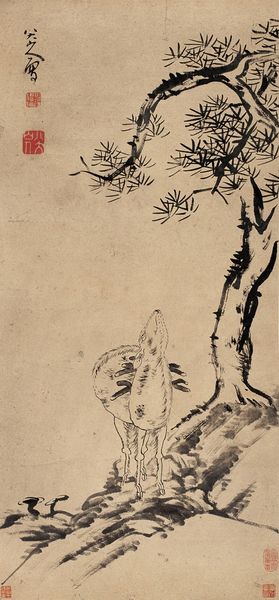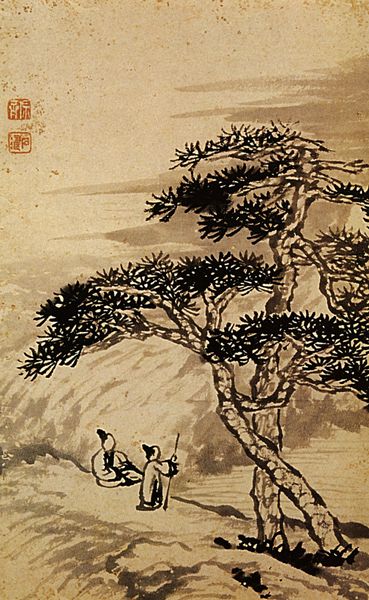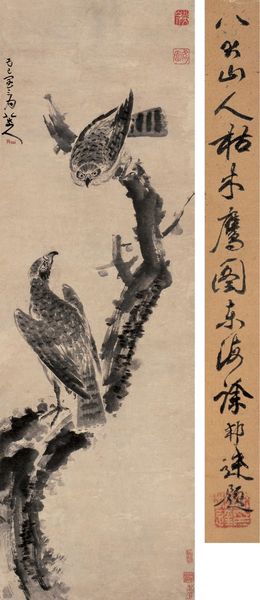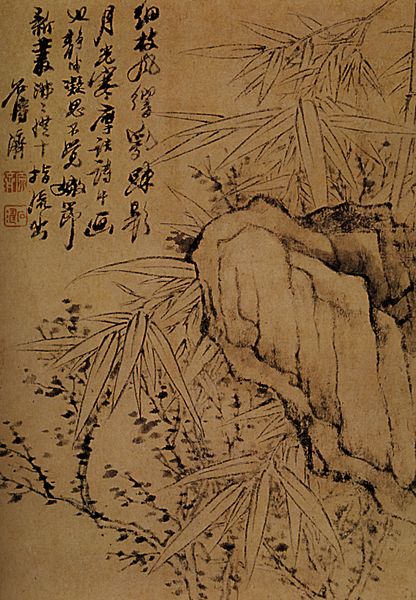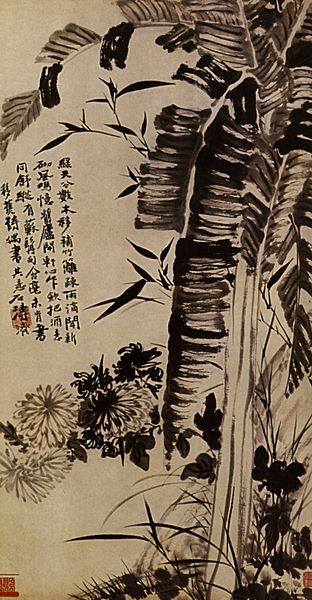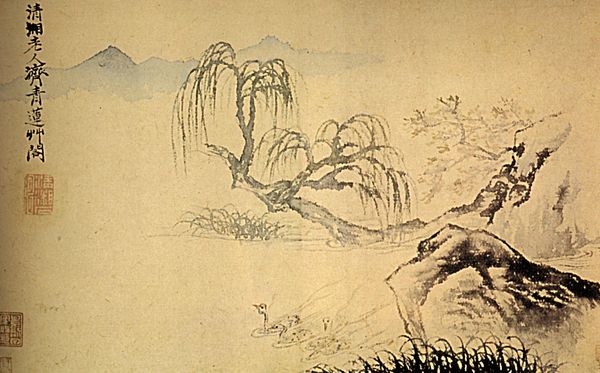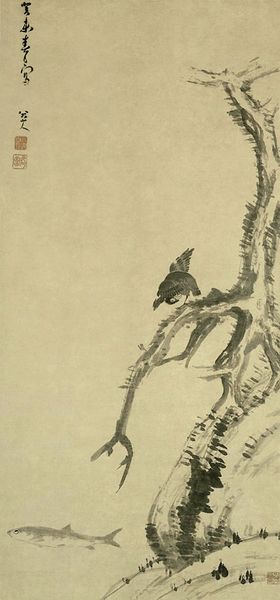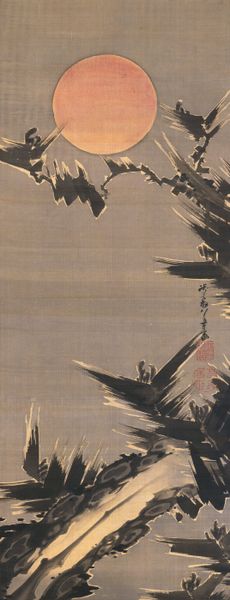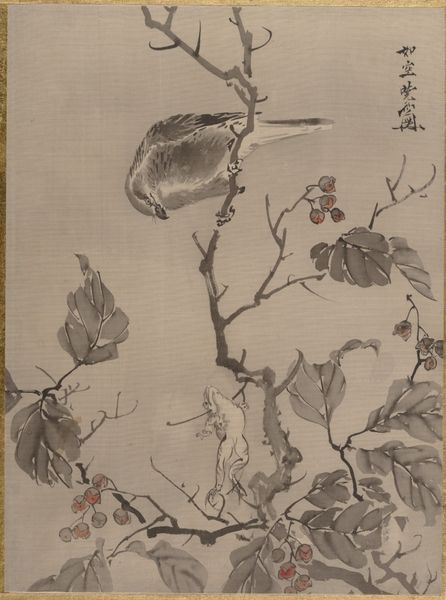
painting, ink
#
painting
#
asian-art
#
landscape
#
figuration
#
ink
#
calligraphy
Copyright: Public domain
Curator: Isn’t this something? "Pine and Cranes" rendered in ink. It exudes a kind of stark elegance, don't you think? Editor: Elegant is a perfect word. I'm struck by the isolation. There’s a powerful sense of stillness; even the birds, seemingly in conversation, contribute to this pervasive solitude, perching on stark rock formations beneath that gnarled tree. The very emptiness around the central image adds a psychological depth to the painting. Curator: Bada Shanren, the artist, had quite the backstory too. A member of Ming's aristocracy, his life turned upside down with the dynasty's fall, eventually becoming a Chan Buddhist monk. Art became his solace, perhaps his silent protest. Knowing that, what do you see now? Editor: I see resistance, but also resilience. The pine tree, often symbolic of endurance, standing amidst political turmoil… it's a defiant gesture. The cranes themselves—symbols of longevity and wisdom—feel less like serene auspicious figures and more like watchful sentinels observing a changed world. It's a poignant statement about cultural memory and identity amidst chaos. Curator: The brushstrokes too have such vigor and almost rebellious flair about them. Note how economical he is, almost brutal, with ink, expressing volume and texture and yet there is very minimal use of the medium. The rough, dry brushstrokes contrast beautifully with the washes that define the background and the bodies of the cranes. I love it, this painting breathes a soulfulness into emptiness. Editor: Indeed. And let’s think about this "emptiness"—the negative space is an active element here. In Taoist philosophy, emptiness isn't just nothing; it’s potential. It holds possibility. By strategically utilizing it, Bada Shanren suggests that even amidst the loss and uncertainty there are endless transformative potentials. The question, really, is what we make of it. Curator: That’s beautiful, bringing us back to hope within that desolation. Well, it’s a painting that echoes through time, I suppose. Editor: Absolutely. Art allows us to continually re-evaluate not only what has been, but also what is yet to be. It reminds us to look closely at our own contexts.
Comments
No comments
Be the first to comment and join the conversation on the ultimate creative platform.
